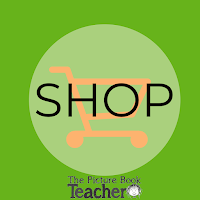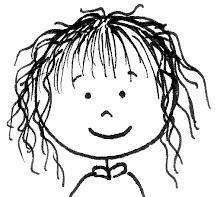The thing (story) should have plot and character, beginning, middle and
end. Arouse pity and then have a catharsis. Those were the best principles I
was ever taught. --Ann Rice
Beginning, middle, end is easily defined as the 3 parts that
make up a story. Let’s face it, you can’t have a story if you don’t have a
beginning, middle, and end. There are many other elements that must be included
in the beginning, middle, and end, and when they are all put together you have
a complete story.
If you have purchased or downloaded any of my products and
it includes a BME (Beginning, Middle, End) portion then you will see this on
the directions page.
Identifying the most important event from the beginning,
middle and end of the story helps a reader understand how organization,
sequence, and plot make a good story. This can then be applied to their own
writing.
Let’s start by
looking at each piece individually.
The beginning – it is the first part of the story. It is
where the writer captures the reader’s attention, either with a great opening
line, a detailed description of the character or setting, or a glimpse into the
topic, problem, or theme of the story. The beginning will also set the mood for
the reader; will it be happy and exciting, dark and mysterious, or silly and
entertaining? A good beginning makes you want to read more.
The middle – it is where the bulk of the story rests. It explains the topic,
gives important key details, and holds the reader’s attention, but most
importantly it is where we reach the climax or turning point of the story. If
the middle is good, it will start the reader thinking about how the story is
going to end.
The end – this is where the story comes to a close, it is the conclusion and
solution to the problem. It is where the character learns a lesson or comes to
terms with the events of what happened. A good ending will keep the reader thinking
about the story, long after it is finished. A great ending leaves the reader
feeling satisfied.
In picture books,
it is important to look at the illustrations. They can tell us as much as the text and can also help us focus in
on what is important.
We refer to the beginning, middle and end of the story all
the time.
- We describe character and character change from
the beginning, middle, and end of the story.
- When we sequence the story, we look at the
beginning, middle, and end of the story.
- When talking about plot, we look at the events
from the beginning, middle, and end of the story.
- When we look at important events from the story,
we pick one from each the beginning, middle and end of the story.
- Problem and solution relies on events from the
beginning, middle and end. What is the problem? How do you know it is a
problem? How was it solved? How do you know it was solved? All from the BME.
- We summarize by looking at events from the whole
story, the beginning, middle and end.
When I teach BME, I like for the students to focus on what
they think is the most important event from each section. For example:
- The most important event from the beginning of
the story is usually some sort of description or action from the character.
- The most important event from the middle of the
story is usually the problem, or climax in the story.
- The most important event from the end of the
story is usually the solution, the message, or how the character feels about
how the problem was solved.
Once
the students find the most important events, I then ask the question, WHY?
Why do you think that is the most important
event?
- Could the rest of the story have happened if
that event, action or feeling wasn’t in the story?
- Does that event lead us to the most important
event in the middle? In the end?
- Do those 3 events give a brief summary of the
story?
Let’s look at the book Muncha! Muncha! Muncha! by
Candace Fleming. The most important event from the beginning happens 4 pages in
when Mr. McGreely actually plants the garden that he has wanted for years. As
the story progresses the local bunnies start to eat Mr. McGreely’s garden and
Mr. McGreely gets angrier and angrier. The most important event from the
middle is when he finally builds a wall that he is sure the bunnies won’t be
able to go around, through or under. This also happens to be the climax of the
story. The most important event from the end of the story is when Mr. McGreely
finds that his garden is untouched by the bunnies - because of the wall he built - but he finds them in his
basket eating the vegetables he just picked. If you look at the illustration at the very end of the book you find the bunnies and Mr. McGreely all munching on carrots, which makes you think that Mr. McGreely has conceeded and is now just going to share his garden with the bunnies. This illustration helps to solidify that the event I picked is the most important from the end - the bunnies are going to get his food no matter what he does, so he might as well just share :)
How do my BME events work with the questions I ask my
students? Let’s take a look.
Could the rest of the story have happened if that event,
action or feeling wasn’t in the story?
- Well, if Mr. McGreely never planted his garden, then he would not
have had a bunny problem.
Does that event lead us to the most important event in the
middle? In the end?
- Mr. McGreely planting the garden brought bunnies
to his garden which in turn, ate all his veggies. As the events unfold, we see Mr.
McGreely trying many different things to keep the bunnies out, until at last,
he builds the wall that keeps them out – the most important event in the
middle.
- The wall that he built worked so well that the bunnies couldn't get in on their own, but they were able to get in and eat Mr. McGreely's food by hitching a ride in his harvest basket...giving them the opportunity to eat Mr. McGreely's freshly picked veggies.
Do those 3 events give a brief
summary of the story?
- Here are the 3 events that I picked. Let’s see
how they work as a summary.
Mr. McGreely finally plants the garden he has always wanted. When the
bunnies keep eating his veggies he builds a big wall that will keep out all the
bunnies. The next morning Mr. McGreely finds that the bunnies didn’t get into
his garden to eat his veggies, but they were in his basket eating the veggies
that he just picked.
I think that this is a pretty good
- not perfect - summary of what the story is about, which means I picked the most important
events from each of the beginning, middle and end of the story.
There are many different graphic
organizers that can be used to record BME, or students can simply write
Beginning, Middle, and End in their reading journal and write out the events.
As mentioned above, once students
can find the most important event for the BME from their books, you can use
this to help them write their stories. Once they know the most important events
from the BME of their own story they can fill in the details around those
events - how did you get from event 1 to event 2, from event 2 to event 3? It really does work out so nicely!
Now, after reading all of this,
here is my question to you. What do you think is more important, the beginning,
middle, or end of the story? What part of the story makes you buy the book,
keep reading the book and/or finish the book? Is it that detailed description
in the beginning that grabs you, or the twists and turns in the middle, or the
ending when it is all wrapped up and you sit there for a few more moments going
over what just happened at the end? Hmmm...
I created a BME poster set as well as a graphic organizer to go along with this post.
You can pick this up for free from either one of my stores.
Happy teaching!














































